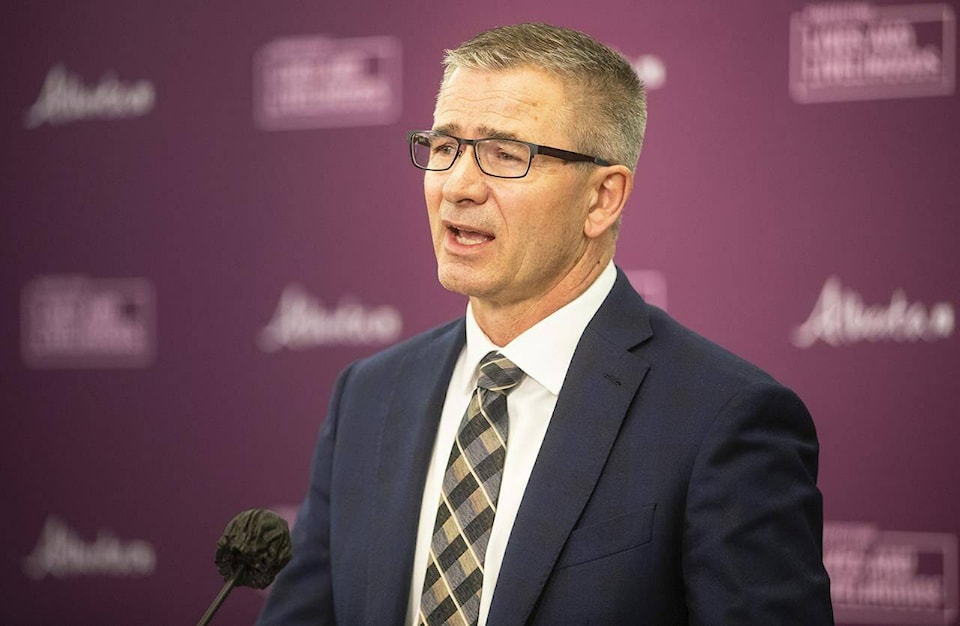Alberta’s oil-fueled prosperity will allow it to reduce the provincial debt by $13.3 billion by the end of March, said Finance Minister Travis Toews in a fiscal update on Thursday.
The province expects to rake in $28.1 billion in non-renewable resource revenue, about 70 per cent of it coming from the oilsands, where a number of projects have reached a stage where their royalty obligations increase.
Even after reducing the projected surplus by $1 billion from the first-quarter estimate because of softening oil prices, Alberta is projecting a $12.3 billion surplus.
This prosperity allowed $2.8 billion to be set aside over the next three years to cover a number of affordability measures rolled out earlier this week. Another $5.8 billion has been set aside in savings, its final destination to be determined later. At the end of next March, the provincial debt is expected to be reduced to $79.8 billion.
Red Deer and District Chamber of Commerce CEO Scott Robinson said Alberta is lucky to have its resources and it is critical to use the funds wisely to maintain future prosperity.
The affordability program was a reasonable approach and the focus on debt reduction is responsible, he said.
“I believe we will be in a much better fiscal position long term as a province if we’re paying our debt down.”
That approach makes even more sense when entering what could be a sustained period of higher interest rates than have been seen in many years.
“Debt repayment is a good long-term strategy in any business if you have funds that exceed your operational needs.”
One of Alberta’s biggest competitive advantages is its low tax regime. “We need to maintain that and in order to maintain that we need to keep out debt under control and take advantage of the good times when they’re here and pay attention.”
The province’s conservative approach to projected oil prices — US$78.50 in 2023 and US$73.50 the following year — is also wise.
“We are so not in control of (oil prices) that you do have to be cautious with it.”
Rural Municipalities of Alberta president Paul McLauchlin said whittling down debt is a good policy, but it should not be done at the expense of necessary expenditures such as infrastructure.
“I think we need to recognize that investment in infrastructure is a good allocation of resources if timed properly and is a future growth investment,” said McLauchlin, who is reeve of Ponoka County. “There is a balancing act between infrastructure investment and debt reduction.
“We’re quite fortunate to be in Alberta and we have to recognize that. It’s a pretty incredible time.
“It’s quite impressive the surplus we have, but it’s important to recognize we don’t want to spend it all, things change and oil prices go up and down as we all know.
“We need to be careful and prudent and make sure we take care of those things that are most important to us now while we can.”
